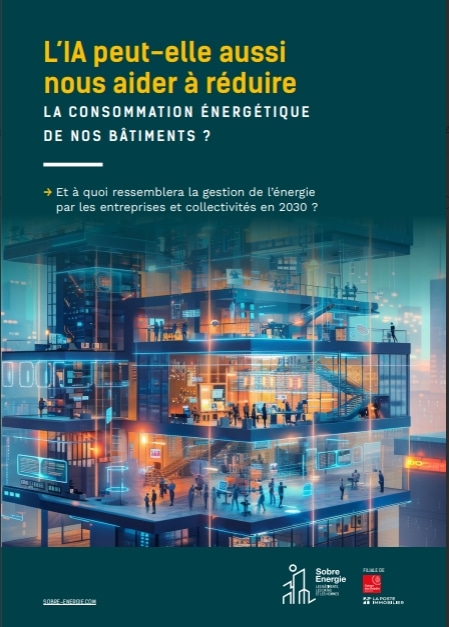From January 1, 2025, the LOM law (Mobility Orientation Law) will require tertiary buildings, new or renovated, to be equipped with a certain number of electric charging stations for vehicles: a charging point must be provided for every 20 parking spaces. This measure, in favor of the energy transition, is part of a global desire to decarbonize the building and transport sector.
Context and objectives of the LOM law
The Mobility Orientation Law, promulgated in 2019, aims to promote the transition towards more sustainable mobility in France. In this context, the deployment of charging infrastructure for electric vehicles (EV) is becoming a priority, particularly in the tertiary sectors. This deployment is intended to encourage the adoption of electric vehicles, essential to achieve the decarbonization objectives set by the State for 2030.
Tertiary buildings, which include offices, shops, hotels, public establishments, etc., represent a significant part of energy consumption. Their transition to greener mobility is therefore essential not only to reduce greenhouse gas emissions, but also to meet the requirements of an increasingly demanding legislative framework in terms of sustainability.
The challenges of electric mobility for tertiary buildings
The rise of electric mobility in tertiary buildings raises several major issues:
Accelerate the energy transition in the tertiary sector
Tertiary buildings are responsible for a significant part of energy consumption and CO2 emissions in France. With an increasingly green vehicle fleet, the integration of charging stations in these buildings is part of a broader decarbonization approach, thus making it possible to limit the carbon footprint of professional activities.
Meet employee and customer expectations
Today, employees and customers increasingly favor companies that adopt an eco-responsible approach. By setting up charging stations, companies position themselves as players committed to the ecological transition, thus attracting environmentally conscious customers and strengthening the image of their brand. In addition, employees with electric cars, often forced to recharge their vehicles at home, will appreciate being able to do so directly at their workplace.
Strengthening charging infrastructure to meet demand
Currently, France is experiencing a rapid increase in the number of electric vehicles, with more than 600,000 registrations in 2023. Tertiary buildings, particularly those located in large urban areas, are key places to accommodate these charging vehicles. . The deployment of charging stations must therefore adapt to this growing demand.
The challenges of decarbonization of the tertiary sector
One of the main objectives of the LOM law is to contribute to the reduction of greenhouse gas emissions. The tertiary sector, which represents around 40% of final energy consumption in France, is directly affected by this problem. By installing charging stations, these buildings contribute to:
Reduce CO2 emissions
The adoption of electric vehicles allows a substantial reduction in CO2 emissions compared to thermal vehicles, particularly if the electricity is produced from renewable energy sources. Thus, a building that integrates charging stations contributes to this reduction, in particular by coupling these terminals with low-carbon energy systems such as photovoltaic panels or green electricity production plants.
Reduce dependence on fossil fuels
Electric mobility reduces dependence on fossil fuels by switching to cleaner energies. Tertiary buildings, as charging points, play a key role in this energy transition by becoming clean energy hubs. These infrastructures can also integrate energy storage systems, thus contributing to optimized energy management over the long term. The Electricity thus stored in an electric car battery can then be reinjected into the network later, at a time when the solar power plant will not produce enough to cover current consumption. This concept, often called Vehicle-to-Grid (V2G), transforms electric vehicles (EVs) into active elements of the electricity grid, offering multiple benefits.
Impact on energy consumption of buildings
The introduction of charging stations in a tertiary building will have a direct impact on its energy consumption, with consequences to be anticipated.
Increase in energy demand
The addition of charging stations will logically increase the demand for electricity. It is crucial for building managers to anticipate this increase in consumption, by adjusting the electrical capacity of their building, or even by planning load optimization systems. These systems, often called "smart charging", make it possible to regulate peaks in consumption, distributing energy more efficiently and avoiding network overloads.
Increase in energy demand
The installation of photovoltaic panels on the roof of a building, combined with charging stations, allows self-consumption of locally produced electricity, thus limiting costs and the carbon footprint. This approach can also maximize the energy efficiency of the building while ensuring charging of electric vehicles. Above all, the consumption of renewable energy buildings (solar, geothermal for example) can thus be deducted from the total consumption subject to the Tertiary Eco Energy Decree (DEET), after having been sub-counted.
Integration of intelligent management solutions
Modern buildings are increasingly integrating intelligent management solutions (BMS - Building Management System) which make it possible to supervise all energy installations, including charging stations. Thanks to these systems, it is possible to optimize the energy consumed, reduce costs and identify times when electricity is cheapest (off-peak hours) to charge vehicles.
The deployment of charging stations in tertiary buildings, imposed by the LOM law, represents an important lever for accelerating the energy transition, not only with regard to electric mobility but also for the decarbonization of the real estate sector. The challenges are multiple: reduction of CO2 emissions, improvement of the brand image of companies, better management of energy consumption, and finally, contribution to a more sustainable society.
Buildings that are able to anticipate this development, by integrating intelligent solutions and renewable energies, will position themselves as precursors in the ecological transition, offering their occupants modern and environmentally friendly infrastructure.
